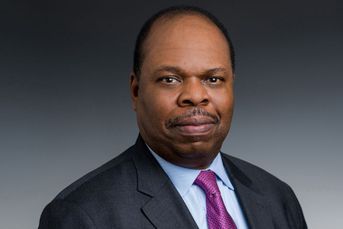Opinions on bull market split following most recent run-up
After the S&P 500 reaches new heights, new questions surface on whether the market is headed up or down.
Financial advisers are facing a schism in the current perception of the stock market. After the S&P 500 closed at an all-time high of 1,985.44 on July 3, the question now facing advisers is whether the bull market in stocks that began in March 2009 is nearing the end of its run, or does it still have legs?
Wall Street opinion is split. Some professional prognosticators are crying that the bull market is moving into its last stages of irrational exuberance and heading straight to the abattoir. Others give credence to the outlook that the bull will continue its run and the Dow Jones Industrial Average will eventually hit 20,000, a number of almost religious significance for investors.
After taking a breather over the long July 4 weekend, the market responded this week by making both camps appear wise. The S&P 500 dropped 1.1% on Monday and Tuesday before rebounding on Wednesday 0.46%. On Thursday it was at 1,968.12 in early afternoon activity, down 4.71 points, or 0.24%.
Market pessimists point to the Federal Reserve’s bond-buying and liquidity program as the main driver of the increase in prices of assets from stocks to real estate. In other words, the rise in stocks will become unhinged because its bedrock is phony.
On the other hand, market optimists salivate over the fact that more than 200,000 jobs have been added to the economy for five straight months. The unemployment rate decreased to 6.1% in June, the best level since September 2008, the same month that Lehman Brothers Holdings Inc. collapsed into bankruptcy.
No one knows in which direction this market is headed. But a look at one key indicator, corporate profits of the S&P 500 companies, reveals to financial advisers that the bull market may have at least a leg or two left to jog along on for the next six to 12 months.
Operating margins on the S&P 500 hit a record high (9.7596%) at the end of the fourth quarter in 2013, according to Howard Silverblatt, S&P’s senior index analyst. In the first quarter, those operating margins fell back ever so slightly to 9.7585%.
Earnings season kicked off on Tuesday with Alcoa reporting second-quarter earnings that beat analysts’ estimates, and Mr. Silverblatt is expecting operating margins of the S&P 500 to reach 9.95%, a new record.
With financial services companies comprising 19% of the S&P 500’s earnings, key companies to watch next week include banking and financial advice heavyweights. Those include Citigroup Inc., which reports earnings on Monday, JPMorgan Chase & Co. on Tuesday and Bank of America Corp., which owns brokerage giant Merrill Lynch and reports on Wednesday.
For those who closely watch the all-important price-to-earnings ratio as a gauge of whether the broad market is cheap or expensive, the current P/E is a bit of a double-edged sword, Mr. Silverblatt said.
“The price-to-earnings ratio is much higher than two years ago, but earnings are in good shape,” Mr. Silverblatt said. The P/E for operating earnings of the S&P 500 in the quarter ending in June 2012 was 13.8. He’s predicting that the P/E for the second quarter will have been between 17.54 and 17.66.
Financial advisers should look for the trend of higher profit margins on the S&P 500 to continue, said Michael Gibbs, director of equity portfolio and technical strategy at Raymond James & Associates Inc. “I think profit margins can stay elevated,” he said. “Technology advancements are incredible and wage growth is sluggish, which is no help for the worker but one of the largest expense components for a company.”
“I’m not in the camp where I’m that worried, as long as interest rates remain low,” he said.
“We are calling for profit growth of 5% to 6% over the next six to 12 months and keeping a level P/E ratio on the S&P 500,” said Mr. Gibbs. “Corporate profitability is main driver of return on the stock market, and the long-term PE ratio for the S&P 500 is about 16, on average.”
During the 11 previous bull markets, the S&P 500’s average P/E at the peak, after adding inflation, was 23.3, he said. Right now, the P/E of the S&P 500 plus the Consumer Price Index, a measurement of inflation was 19.7, according to Mr. Gibbs.
That indicates the bull market still has some room to run, in part due to low inflation, he said.
Raymond James Financial Inc., a holding company, has more than 6,000 registered representatives and financial advisers under a variety of business units.
“I try to get our advisers focused on profitability of the S&P 500, and then put a valuation on it,” Mr. Gibbs said. “I’m optimistic, for sure. The market is a little extended right now and could pull back in the near term, but it doesn’t look like it’s a market that’s going to crater.”
Learn more about reprints and licensing for this article.








